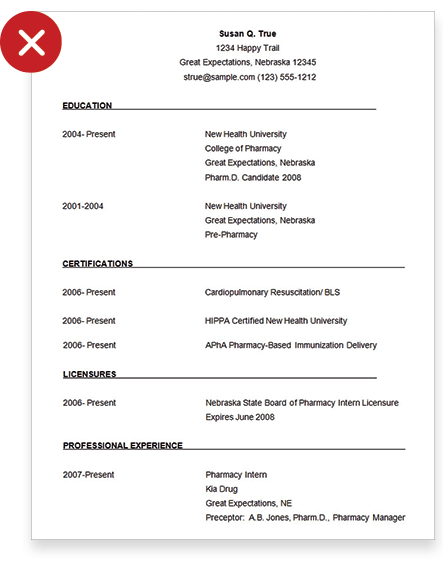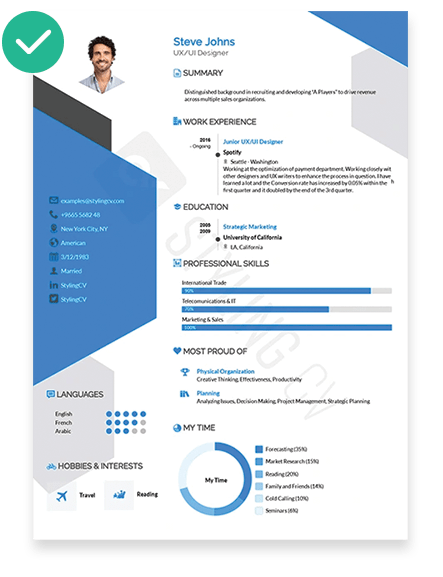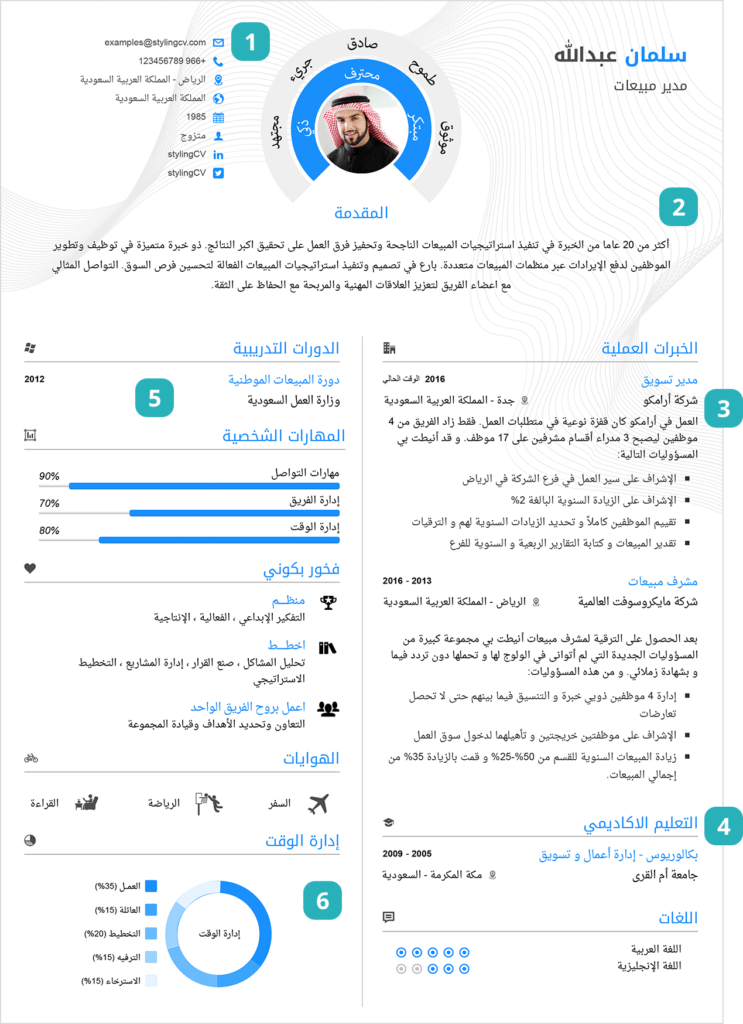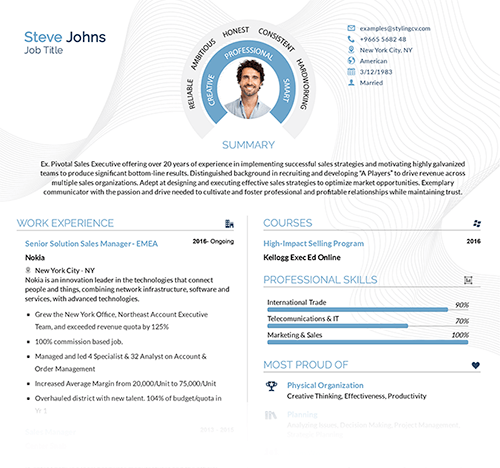
Es ist kein Geheimnis, dass es eine Herausforderung sein kann, ein Vorstellungsgespräch zu bekommen, ganz zu schweigen von der eigentlichen Stelle. Aber wenn Sie wissen, wie Sie den perfekten Lebenslauf erstellen, haben Sie etwas, was andere Bewerber einfach nicht haben - eine Chance! Dank dieses 10-Schritte-Leitfadens sind Sie auf dem besten Weg zu einem Vorstellungsgespräch mit einem gut gestalteten Lebenslauf, der die Blicke Ihrer Gesprächspartner auf sich ziehen soll.
Hilfe zum Lebenslauf - Ihr 10-Schritte-Leitfaden zum Schreiben des perfekten Lebenslaufs
Fordern Sie jetzt Ihren kostenlosen Lebenslauf anIhr 10-Schritte-Leitfaden zum Schreiben des perfekten Lebenslaufs
Es ist kein Geheimnis, dass es eine Herausforderung sein kann, ein Vorstellungsgespräch zu bekommen, ganz zu schweigen von der eigentlichen Stelle. Aber wenn Sie wissen, wie Sie den perfekten Lebenslauf erstellen, haben Sie etwas, was andere Bewerber einfach nicht haben - eine Chance! Dank dieses 10-Schritte-Leitfadens sind Sie auf dem besten Weg zu einem Vorstellungsgespräch mit einem gut gestalteten Lebenslauf, der die Blicke Ihrer Gesprächspartner auf sich ziehen soll.
Sarah Reynolds
Spezialist für Inhalte


Wissen Sie, wie man den perfekten Lebenslauf schreibt? Es mag wie eine beängstigende Aufgabe erscheinen, aber eigentlich ist es gar nicht so schwierig. Lesen Sie unseren 10-Schritte-Leitfaden zum Schreiben des perfekten Lebenslaufs!
Eine Zusammenfassung dessen, was Sie in diesem Artikel finden werden:
- Lernen Sie den Lebenslauf kennen.
- Die Schritte zum Schreiben eines Lebenslaufs sind perfekt.
- Die wichtigsten Fragen zum Schreiben eines Lebenslaufs.
- Die wichtigsten Tipps, die Ihnen dabei helfen werden.
Definition des Begriffs "Lebenslauf"
Unabhängig davon, ob Ihre Karriere gerade erst begonnen hat oder bereits seit Jahren andauert, ist ein Lebenslauf eine Zusammenfassung davon, die etwa eine Seite lang ist.
Er hebt die Positionen hervor, die Sie bekleidet haben und jetzt bekleiden, die Aufgaben, die Sie übernommen haben, die Talente, die Sie erworben haben, und die Eigenschaften, die Sie zu einem wertvollen Mitarbeiter machen.
All diese Faktoren zusammengenommen machen es für jeden Personalverantwortlichen sehr einfach, Ihre Qualifikationen und Ihre Eignung für eine Stelle zu erkennen.
Trotz der Mühe, die Sie in die Erstellung Ihres Lebenslaufs gesteckt haben, werfen Personalverantwortliche in der Regel nur einen flüchtigen Blick darauf und nehmen sich nur wenige Sekunden Zeit.
Dennoch ist es vernünftig zu sagen, dass es wichtig ist, einen fantastischen Lebenslauf zu erstellen - im Gegensatz zu einem eilig zusammengestellten Lebenslauf -.
Lesen Sie mehr: 10 Wichtige Abschnitte im Lebenslauf
Was will ein Arbeitgeber in einem Lebenslauf sehen?
Drei Elemente werden von Personalchefs in einem Lebenslauf gesucht: "Was haben Sie getan? Warum haben Sie es getan? Was war das Ergebnis?
Martin McGovern, Inhaber von Career Therapy und Karriereberater bei Muse, sagt. "Sie werden auf dem richtigen Weg sein, wenn Sie alle drei Punkte in Ihrem Lebenslauf ansprechen können."
Das Ziel ist es, eine einfache, verständliche Sprache zu verwenden. Die Realität ist, dass die meisten Lebensläufe unlogisch sind. Diese Dokumente sind überfüllt mit Fachjargon, übermäßig technisch und redundant.
Wenn Sie versuchen, einen Lebenslauf zu lesen, der nicht von Ihnen stammt, werden Sie sofort feststellen, dass er sich liest, als wäre er von einem Alien verfasst worden. Stellen Sie sich einen Personalvermittler vor, der keine Ahnung hat, wie Ihr Job funktioniert.
Wie können Sie Ihren Lebenslauf für sie verständlich machen?
Außerdem ist der Personalverantwortliche an Ihnen in Verbindung mit ihnen interessiert und nicht nur an Ihnen und Ihnen allein.
Laut Yurovsky versuchen Personalverantwortliche festzustellen, ob ein Bewerber "den Anforderungen" der zu besetzenden Stelle entspricht.
"Ihr Lebenslauf sollte dieses Bild vermitteln, damit der Personalverantwortliche nicht nur weiß, welche täglichen Aufgaben Sie bewältigen können, sondern auch, warum Sie vor allem einen Mehrwert für das Unternehmen darstellen", so der Autor.
Wie man einen perfekten Lebenslauf schreibt
Hier sind die 10 wichtigsten Schritte zum Schreiben des perfekten Lebenslaufs:
1. das richtige Format macht den Unterschied
Vielen ist nicht klar, wie wichtig es ist, das richtige Format für ihren Lebenslauf zu wählen. Traditionell gibt es drei verschiedene Formate, die verwendet werden sollten, nämlich
- Umgekehrtes chronologisches Format, das den meisten Bewerbern am vertrautesten ist, da es Ihre wichtigsten Erfahrungen zuerst aufführt.
- Gefolgt von einem Kombinationsformat, das sich hervorragend für erfahrene Fachleute eignet, die relevante Fähigkeiten hervorheben möchten, die sich auf eine neue Karriere übertragen lassen.
- Und schließlich das funktionale Format, das vollständig auf Fähigkeiten basiert.
Es ist wichtig, daran zu denken, dass jedes dieser Formate seine Vor- und Nachteile hat. Deshalb sollten Sie das richtige Format wählen, das zu Ihrer Erfahrung, Ihren Fähigkeiten und vor allem zu Ihren Zielen passt.
2. Vergessen Sie nicht Ihre Kontaktinformationen
Es mag Sie überraschen, aber viel zu viele Bewerber versäumen es, ihre persönlichen Daten und Kontaktinformationen in ihren Lebenslauf aufzunehmen - ein großer Fehler!
Aber warum? Weil Ihre Gesprächspartner mehr über Sie erfahren möchten, als nur Ihre Erfahrungen auf einem Blatt Papier oder auf dem Bildschirm zu lesen. Grundlegende Kontaktinformationen sind zum Beispiel ein Muss.
Von dort aus sollten Sie einen Link zu Ihrem LinkedIn-Profil einfügen, damit Ihr potenzieller Arbeitgeber mehr darüber erfährt, was Sie leisten können und geleistet haben.
Sie können sogar Links zu Profilen in sozialen Medien, zu Ihrer Website, zu einem Blog oder sogar zu einem persönlichen Portfolio hinzufügen, aber all das kommt erst, nachdem Sie die Grundlagen wie Ihren Namen, Titel, Postanschrift, Telefonnummer und E-Mail-Adresse hinzugefügt haben.
Und lassen Sie uns hier auch noch Ihr LinkedIn-Profil mit einbeziehen, das sind alles relevante Informationen für einen potenziellen Arbeitgeber!
3. Der perfekte Lebenslauf braucht eine gute Zusammenfassung und sagt alles
Die Zusammenfassung - auch Überschrift genannt - ist ein wichtiger Bestandteil eines gut gestalteten Lebenslaufs, der nicht übersehen werden sollte.
Und denken Sie daran, dass Ihr wahrscheinlicher Arbeitgeber die Lebensläufe schneller durchblättert, als Sie durch Ihre Kamerarolle auf Ihrem Handy wischen können, deshalb müssen Sie sicherstellen, dass Sie den Nagel auf den Kopf treffen.
Gehen Sie nicht einfach nur Ihre täglichen Aufgaben durch - schreiben Sie klare, prägnante und kurze Sätze, in denen Sie Ihre Leistungen, Erfahrungen und Fähigkeiten nacheinander aufzählen. Vermeiden Sie außerdem die Ich-Form!
4. Relevant bleiben
In vielen Lebensläufen fehlt das, was wir als "relevante" Berufserfahrung bezeichnen würden.
Stattdessen geben die Bewerber jeden Job an, den sie jemals ausgeübt haben - einschließlich ihres Jobs auf der Bowlingbahn, als sie 17 waren.
Denken Sie daran, dass derjenige, der Ihren Lebenslauf lesen wird, ihn wahrscheinlich in wenigen Minuten durchgehen möchte. Das ist Ihre Chance, dem Arbeitgeber zu zeigen, dass Sie über relevante Fähigkeiten und Erfahrungen verfügen, die für ihn von Interesse sein könnten.
Bei der Auflistung Ihrer einschlägigen Erfahrungen sollten Sie folgendermaßen vorgehen:
- Berufsbezeichnung
- Standort
- Zeitleiste
- Zuständigkeiten und Aufgaben
- Errungenschaften und Anerkennungen
- Relevante Schlüsselwörter
Warum sind Lebenslaufvorlagen in MS Word SCHLECHT?

- Es ist eine sehr altmodische Art, einen professionellen Lebenslauf zu verfassen, und die Erstellung nimmt viel Zeit in Anspruch.
- Jedes Mal, wenn Sie Ihren Lebenslauf aktualisieren müssen, geht die Vorlage kaputt und Sie müssen alles noch einmal neu machen.
- Wenn Sie die Vorlage ändern wollen, werden Sie Stunden damit verbringen, herauszufinden, welcher Abschnitt wohin gehört.

Klingt einfach, oder? Denken Sie auch daran, dass Sie beim Einfügen mehrerer Berufserfahrungen in Ihren Lebenslauf das richtige Format wählen müssen. Wenn Sie sich für ein umgekehrt chronologisches Format entscheiden, müssen Sie darauf achten, dass Sie die jüngste Position an die erste Stelle setzen!

5. Um den perfekten Lebenslauf zu schreiben, müssen Sie den Abschnitt "Ausbildung" einfach gestalten
Ob Sie es glauben oder nicht, Bildung ist für viele Bewerber immer eine Art Grauzone.
Vor allem, weil die Art und Weise, wie sie in Ihrem Lebenslauf dargestellt werden sollte, einfach zu unklar ist.
Hier möchten wir es für Sie vereinfachen und es einfacher denn je machen, Ihre harte Arbeit in der Wissenschaft auf die richtige Weise zu präsentieren.
Geben Sie also zuerst Ihren höchsten Abschluss an. Wenn Sie einen Master-Abschluss erworben haben, sollte dieser ganz oben stehen.
Alles andere sollte in umgekehrter chronologischer Reihenfolge folgen.
Wenn Sie ein College besucht haben, sollten Sie keine Angaben zur High School machen, da diese einfach nicht relevant sind.
Von dort aus können Sie alle Fachkurse, die Sie belegt haben, alle Auszeichnungen und Preise sowie alle Ehrungen hinzufügen.
Wo genau platzieren Sie nun Ihren Bildungsteil?
Das hängt davon ab, wie viel Erfahrung Sie haben:
- Wenn Sie eine Einstiegsposition suchen, ist es in Ordnung, wenn Sie Ihre Ausbildungsinformationen über Ihre Berufserfahrung stellen.
- Wenn Sie ein erfahrener Profi sind, platzieren Sie ihn direkt unter Ihrer Berufserfahrung.
6. Wenn Sie den perfekten Lebenslauf schreiben, müssen Sie Ihre richtigen Fähigkeiten hinzufügen
Es gibt einen Unterschied zwischen dem, was wir als Hard Skills und Soft Skills bezeichnen würden.
Harte Fähigkeiten
Hard Skills sind spezifische Fähigkeiten, die nur wenige Menschen beherrschen - vielleicht sind Sie zum Beispiel ein Amateurfotograf und haben sich zu einem Meister in Adobe Photoshop entwickelt.
Dies könnte eine wichtige Fähigkeit sein, die Ihre Bewerbung von anderen unterscheidet - auch wenn sie nichts mit Fotografie zu tun hat!
Weiche Fähigkeiten
Soft Skills hingegen sind Fähigkeiten, die man einfach durch Erfahrung erlernt.
Dazu gehören zum Beispiel Dinge wie Organisationstalent, Führungsqualitäten, Anpassungsfähigkeit, Kommunikation und vieles mehr.
Aber wenn Sie Ihre Hard Skills und Soft Skills miteinander kombinieren, präsentieren Sie ein einzigartiges Kompetenzprofil, an dem potenzielle Arbeitgeber interessiert sein werden.
Aber denken Sie daran, dass Sie immer die richtigen Fähigkeiten hinzufügen - das bedeutet, dass Sie nur Fähigkeiten hinzufügen, die für die Stelle, auf die Sie sich bewerben, relevant sind.
Wenn Sie sich also als Buchhalter bewerben, sind Ihre Photoshop-Fähigkeiten einfach nicht relevant!
7. Fügen Sie einige wichtige zusätzliche Abschnitte in Ihren Lebenslauf ein
Lebensläufe, die dies rechtfertigen, können immer von einigen zusätzlichen Abschnitten profitieren, die Dinge wie Ihre Hobbys, Ihre Interessen, relevante ehrenamtliche Tätigkeiten, Zertifizierungen, Auszeichnungen und Ähnliches enthalten können.
Dies sollten Sie jedoch nur dann tun, wenn Ihr Lebenslauf dies rechtfertigt.
Sie können sogar Informationen wie Veröffentlichungen oder Projekte, in denen Ihr Name vorkommt, Zweitsprachen, Portfolio-Informationen und vieles mehr angeben.
Solange es für die Stelle, auf die Sie sich bewerben, relevant ist, ist es ein faires Spiel!
Ihre Erfolgsgeschichte beginnt mit einem Lebenslauf

8. Lassen Sie das Anschreiben nicht links liegen
Ähnlich wie die Zusammenfassung ist auch ein Anschreiben ein Muss. Und viel zu viele potenzielle Bewerber verpassen den Job ihrer Träume, weil sie zu zögerlich sind, ein Anschreiben zu verfassen.
Diese wichtige Information kann als Ihr Lebenslauf 2.0 betrachtet werden. Sie ermöglicht es Ihnen, Ihre Erfahrung zu erweitern, die wichtigsten Errungenschaften in Ihrer bisherigen Laufbahn hervorzuheben und gibt Ihnen die Möglichkeit, schnell und klar zu formulieren, warum Sie der am besten qualifizierte Kandidat für eine Stelle sind.
Und wissen Sie was? Sie können das alles in ganzen, vollständigen Sätzen tun.
9. Lektorat Lektorat Lektorat Lektorat Ihres Lebenslaufs!
Dies sollte eigentlich selbstverständlich sein, aber lesen Sie Ihren Lebenslauf unbedingt Korrektur, bevor Sie ihn speichern und abschicken.
Und bevor Sie das tun, lassen Sie es auch von jemand anderem lesen und korrigieren.
Überprüfen Sie Ihre Informationen noch einmal auf ihre Richtigkeit, verwenden Sie die Rechtschreibprüfung von Microsoft Word, nutzen Sie eine Software eines Drittanbieters wie Grammarly, oder bringen Sie sie zu jemandem, dem Sie vertrauen.
Verpassen Sie nicht Ihre Chance auf ein Vorstellungsgespräch wegen eines falsch gesetzten Kommas, eines vergessenen Punktes oder eines falschen Datums!
10. Sei zuversichtlich!
Der letzte Schritt in diesem 10-Schritte-Leitfaden für den perfekten Lebenslauf ist einfach - seien Sie zuversichtlich. Wenn Sie jeden einzelnen der oben aufgeführten Schritte bis ins Detail befolgt haben, besteht Ihre letzte Aufgabe darin, Vertrauen in Ihre Fähigkeiten, in Ihren Lebenslauf und in sich selbst zu haben, um den Job zu bekommen, den Sie schon immer haben wollten.
Lesen Sie mehr: Liste der 100 besten Wörter, um sich selbst zu beschreiben [Adjektive & mehr]
FAQ zum Schreiben des perfekten Lebenslaufs
1-Was sind die 5 goldenen Regeln beim Schreiben von Lebensläufen?
Die 5 goldenen Regeln für das Schreiben von Lebensläufen
- Das richtige Format macht den Unterschied.
- Vergessen Sie nicht Ihre Kontaktinformationen.
- Behalten Sie die Relevanz.
- Lassen Sie das Anschreiben nicht links liegen.
2-Wie sieht ein guter Lebenslauf im Jahr 2022 aus?
Wir empfehlen in 99,9 % der Fälle eine umgekehrt chronologische Struktur des Lebenslaufs. Es ist das beliebteste und praktischste Format im Jahr 2022, da es von den Bewerberverfolgungssystemen leicht verstanden werden kann. Dieses Format ist bei Personalchefs und Personalvermittlern gleichermaßen bekannt.
3-Was sollten Sie nicht in einen Lebenslauf für 2022 schreiben?
Begrenzen Sie die Menge der Informationen, die nichts mit der Stelle zu tun haben, auf die Sie sich bewerben. Sicherlich haben Sie Interessen, Hobbys, Sprachen, Lieblingssongs und Ziele, aber beschränken Sie die Informationen, die nichts über Ihre Fähigkeit zur Rechenschaftspflicht, Verantwortung und harter Arbeit aussagen, auf ein vernünftiges Maß.
4-Wie weit sollte Ihr Lebenslauf zurückreichen?
Für die meisten Branchen raten Karriereberater und erfahrene Verfasser von Lebensläufen, sich auf die letzten 10 bis 15 Jahre zu konzentrieren. (Für einige Positionen, z.B. in der Bundesregierung oder im akademischen Bereich, werden häufig ausführlichere Lebensläufe verlangt).
Styling CV bietet alle Lösungen für Ihren Lebenslauf, und im Blog-Bereich finden Sie verschiedene Artikel über die Erstellung eines Lebenslaufs mit vielen Tipps und Anleitungen.
Melden Sie sich jetzt an und profitieren Sie von vielen Vorteilen bei der Erstellung eines Lebenslaufs und dem Zugriff auf verschiedene Vorlagen.
Ähnliche Artikel
Tags
Erstellen Sie Ihren Lebenslauf in 10 Minuten
Verwenden Sie professionelle, praxiserprobte Lebenslaufvorlagen, die genau den "Lebenslaufregeln" entsprechen, nach denen Arbeitgeber suchen. Meinen Lebenslauf erstellen
MEINEN LEBENSLAUF JETZT ERSTELLEN




